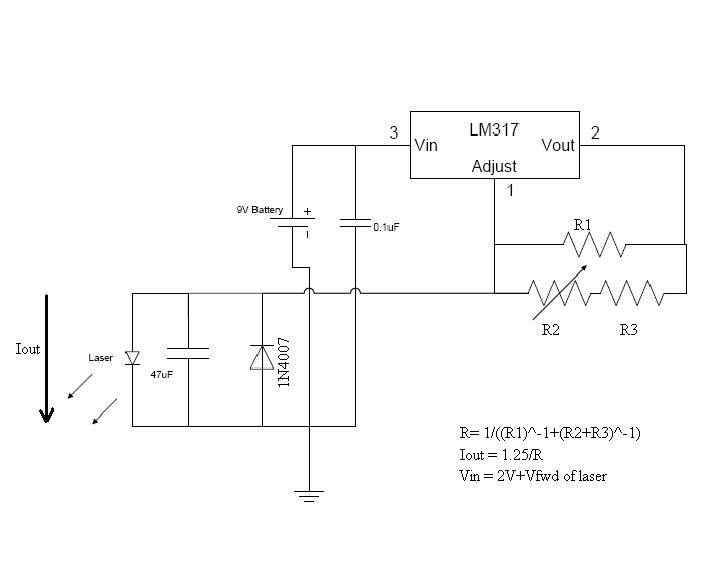itsmei
0
- Joined
- Dec 14, 2009
- Messages
- 151
- Points
- 0
Hi,
The plan is that i am going to build my own driver for when i get a 445nm A-140 1W diode, i will be running it at 1250mA and having 7.4v by using 2x 18650 batteries.
The parts:
LM317
1ohm resistor
47uF 35V capacitor
50ohm pot
IN4001 diode
A 1ohm resistor allows 1250mA to be drawn, that is the amount of current i am going set to the diode. I am going to get the 50ohm pot and make it come out of the "lab" style case so it the power input is adjustable, this way when the pot is set to maximum i will have 1250mA which is ~1 watt, if i want less power i will simply adjust the 50ohm pot lower. Does this sound a good idea?
The question is that if i keep turning the pot, will it eventually break or blow the diode?
Thanks
The plan is that i am going to build my own driver for when i get a 445nm A-140 1W diode, i will be running it at 1250mA and having 7.4v by using 2x 18650 batteries.
The parts:
LM317
1ohm resistor
47uF 35V capacitor
50ohm pot
IN4001 diode
A 1ohm resistor allows 1250mA to be drawn, that is the amount of current i am going set to the diode. I am going to get the 50ohm pot and make it come out of the "lab" style case so it the power input is adjustable, this way when the pot is set to maximum i will have 1250mA which is ~1 watt, if i want less power i will simply adjust the 50ohm pot lower. Does this sound a good idea?
The question is that if i keep turning the pot, will it eventually break or blow the diode?
Thanks






